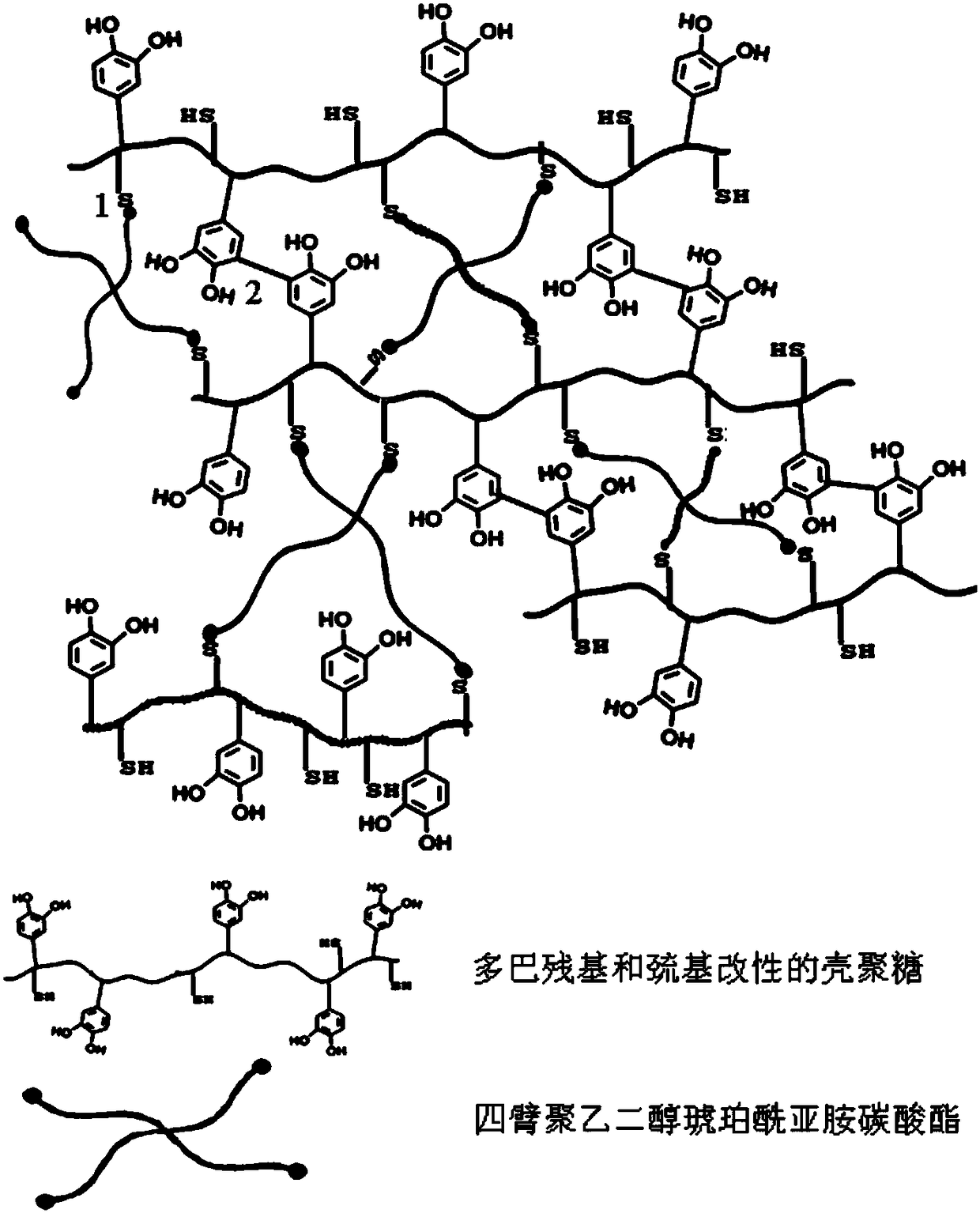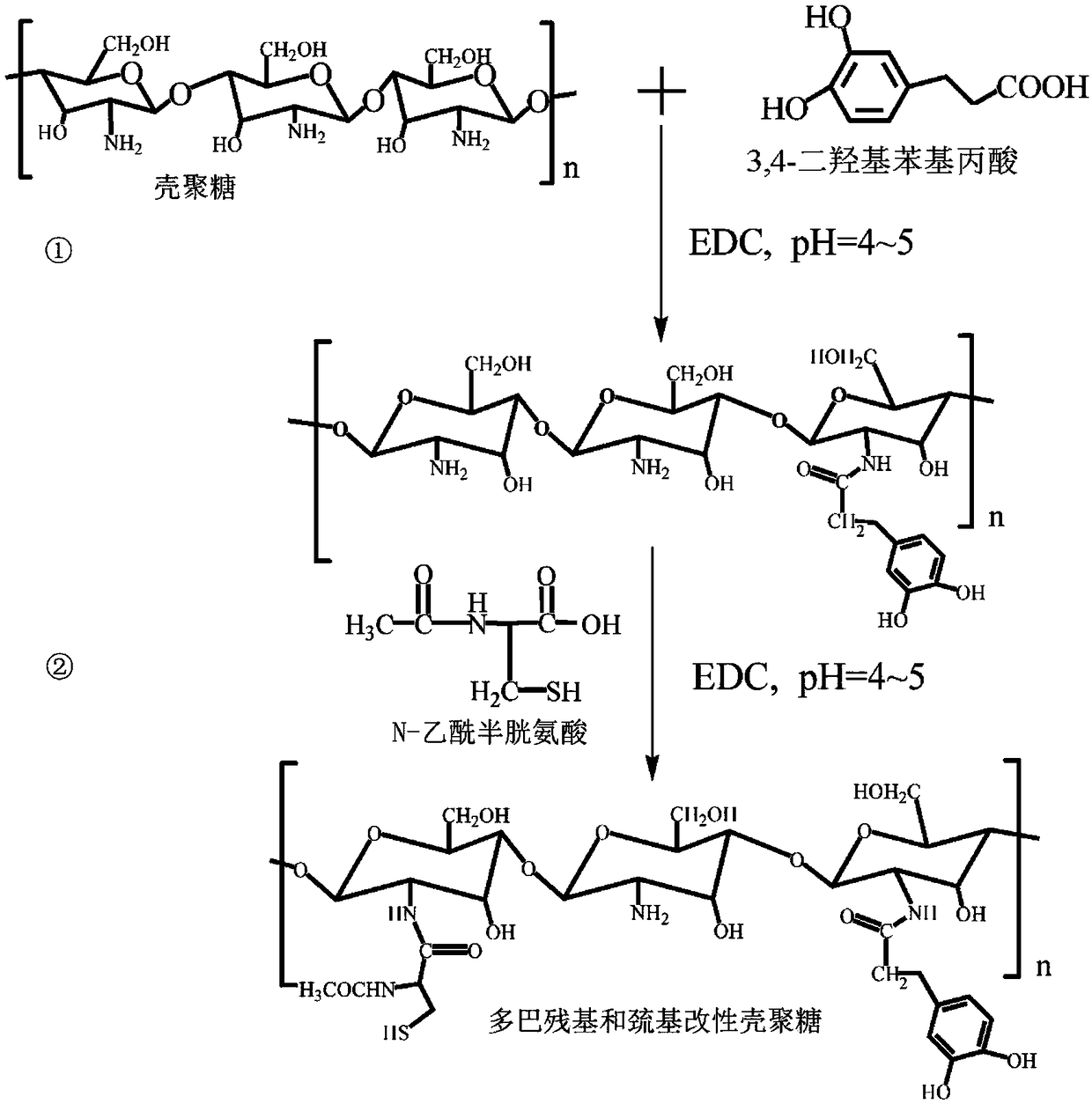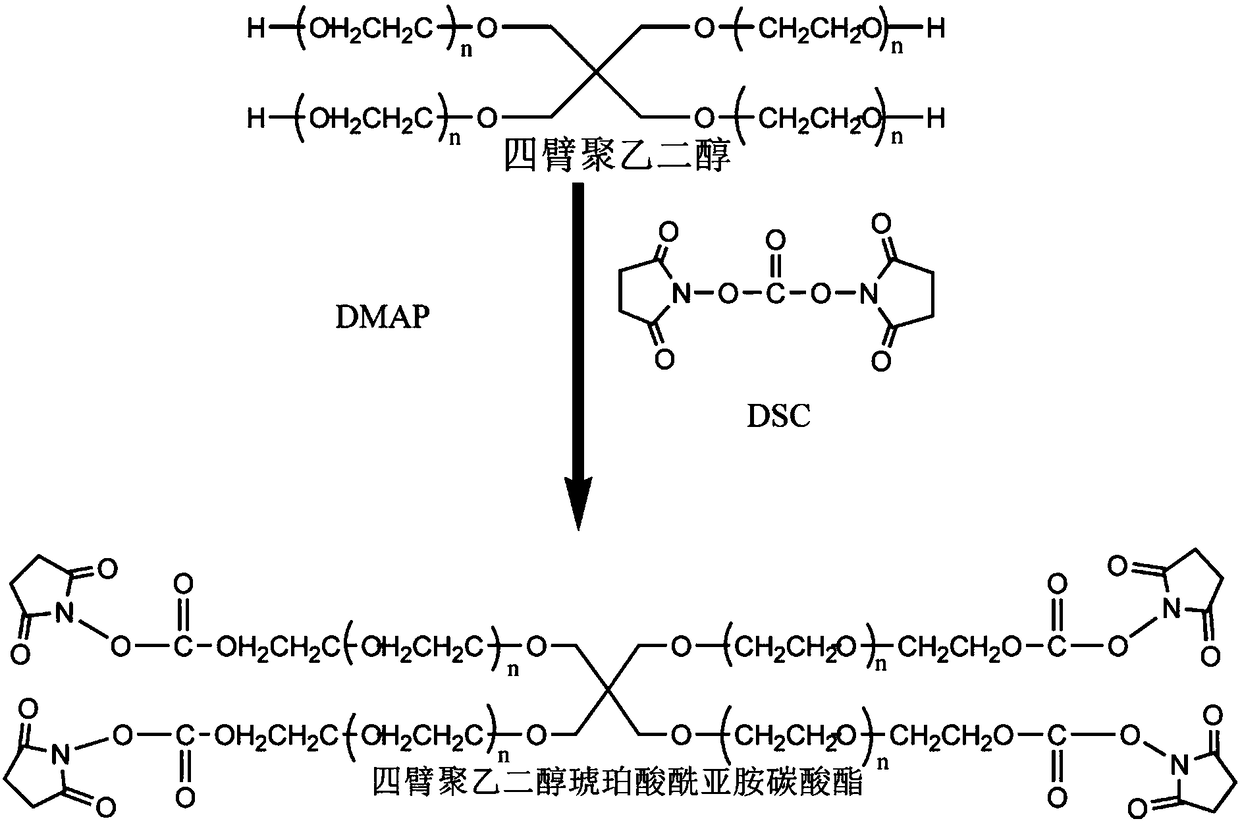Bi-crosslinking mussel binding protein bionic hydrogel for tissue adhesive and preparation method of bi-crosslinking mussel binding protein bionic hydrogel
A tissue adhesive and double-crosslinking technology, which is applied in the field of double-crosslinked mussel binding protein biomimetic hydrogel and its preparation, can solve problems such as low bonding strength or mechanical strength, and reduce efficacy, and achieve crosslinking Fast speed, good adhesion and good biocompatibility
- Summary
- Abstract
- Description
- Claims
- Application Information
AI Technical Summary
Problems solved by technology
Method used
Image
Examples
Embodiment 1
[0031] (1) Weigh 0.5 gram of chitosan, add 50 milliliters of deionized water that adopts 1mol / L hydrochloric acid to adjust the pH value to 5, stir at room temperature, until forming a colorless or light yellow transparent solution, then add 1.72mmol of 3 , 4-dihydroxyphenylpropionic acid, stir and mix evenly, add 1-ethyl-(3-dimethylaminopropyl) dissolved in 50ml deionized water and ethanol mixed solution (v:v=1:1) ) carbodiimide hydrochloride (10.32mmol) solution, adjust the pH value of the reaction solution to 4-5, react at room temperature for 12 hours, dialyze in ultrapure water for 3 days, freeze-dry to obtain dopa residue modified chitosan sugar.
[0032] (2) Get 0.5 grams of dopa residue modified chitosan in step (1) and dissolve in 50 milliliters of deionized water that adopts 1mol / L hydrochloric acid to adjust the pH value to 5, stir and dissolve at room temperature, then add 5.16mmol N-acetylcysteine and 10.32mmol of 1-ethyl-(3-dimethylaminopropyl) carbodiimide hy...
Embodiment 2
[0036] (1) Take 1.0 gram of chitosan in 100 milliliters of deionized water that adopts 1mol / L hydrochloric acid to adjust the pH value to 5, stir at room temperature until a colorless or light yellow transparent solution is formed, then add 3.44mmol of 3, 4-dihydroxyphenylpropionic acid, stir and mix evenly, add 1-ethyl-(3-dimethylaminopropyl)carbon dissolved in 100ml deionized water and ethanol mixed solution (v:v=1:1) Diimine hydrochloride (20.64mmol) solution, adjust the pH value of the reaction solution to 4-5, react at room temperature for 24 hours, dialyze in ultrapure water for 3 days, freeze-dry to obtain dopa residue modified chitosan.
[0037] (2) get 0.5 gram of dopa residue modified chitosan prepared in step (1) and dissolve in 50 milliliters of deionized water that adopts 1mol / L hydrochloric acid to adjust the pH value to 5, stirring and dissolving at room temperature, then adding 5.16mmol of N-acetylcysteine and 10.32mmol of 1-ethyl-(3-dimethylaminopropyl)carbo...
PUM
 Login to View More
Login to View More Abstract
Description
Claims
Application Information
 Login to View More
Login to View More - R&D
- Intellectual Property
- Life Sciences
- Materials
- Tech Scout
- Unparalleled Data Quality
- Higher Quality Content
- 60% Fewer Hallucinations
Browse by: Latest US Patents, China's latest patents, Technical Efficacy Thesaurus, Application Domain, Technology Topic, Popular Technical Reports.
© 2025 PatSnap. All rights reserved.Legal|Privacy policy|Modern Slavery Act Transparency Statement|Sitemap|About US| Contact US: help@patsnap.com



